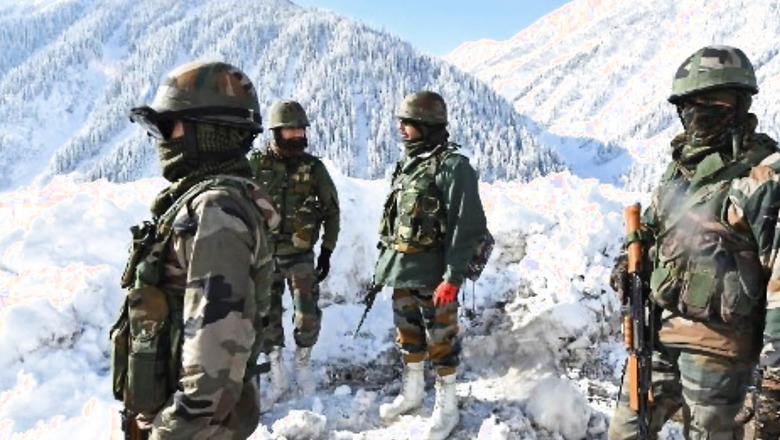
views
The 14th round of military commander-level talks between India and China, scheduled for today, is said to focus on establishing confidence between the opposing forces ahead of approaching summers in eastern Ladakh, where a 20-month standoff between the two countries is going on, while also seeking to address issues associated with disengagement at pending friction points along the Line of Actual Control (LAC) in the region.
On Monday, security sources said the Indian side is looking forward to a “constructive dialogue” with China to resolve the balance friction areas along the LAC. Chinese Foreign Ministry spokesman Wang Wenbin said, “Currently, the situation on the border areas is stable on the whole and the two sides are in dialogue and communication through diplomatic and military channels.”
The talks will take place on January 12 at the Chushul-Moldo meeting point, on the Chinese side of the Line of Actual Control in eastern Ladakh. Sources in the government told News18.com it is expected that the talks this time will lead to a resolution at the Hot Springs area, where a limited number of troops from both sides continue to face each other.
India-China Talks | Here’s what happened so far:
The Indian and Chinese armies have been locked in a bitter standoff in multiple locations in eastern Ladakh since May 2020, when around 250 Chinese and Indian soldiers got into a violent face-off. The tension escalated manifold after 20 Indian soldiers were killed in a violent clash in Galwan Valley on June 15. This led to both sides gradually deploying tens of thousands of soldiers as well as heavy weaponry along the border.
The first round of the Lt General talks was held on June 6 during which both sides finalised an agreement to disengage gradually from all the standoff points beginning with Galwan Valley. However, several rounds of military and diplomatic talks have only resulted in partial disengagement of troops until now.
Tension escalated in the region after Indian troops foiled attempts by Chinese military to occupy Indian territories in the southern bank of Pangong lake area on the intervening night of August 29 and 30. Following the confrontation, India occupied a number of strategic heights in the Chushul sector overlooking crucial bases of the Chinese military. Since then, China has deployed additional troops, tanks and anti-tank guided missiles in the area.
Almost nine months into the military standoff in Ladakh along the LAC, India and China announced that a limited and phased disengagement of troops is under way from February 10, 2021 on the northern and southern banks of Pangong Tso. The two sides completed the withdrawal of troops and weapons from the north and south banks of the Pangong lake in line with an agreement on disengagement after the 10th round of talks.
External Affairs Minister S Jaishankar, however, said on October 9 last year that although India and China made some progress by carrying out disengagement in a number of areas including Pangong Tso, the “larger problem” of “sizeable deployment” of Chinese troops in the region remains.
“I still have not heard a credible explanation as to why they chose to bring that size of forces to that sector of our border. Now, if peace and tranquillity is disturbed and attempts are being made to change the LAC status quo unilaterally and large forces are brought to the border in contravention of written agreements, then obviously the relationship will be impacted,” he said.
The 13th round of military talks took place on October 10, 2021 and they ended in a stalemate. Both sides failed to make any headway in the talks with the Indian Army saying after the dialogue that the “constructive suggestions” made by it were neither agreeable to the Chinese side nor it could provide any “forward-looking” proposals.
Later in the month, China enacted a new national law, which was to come into effect from January 1 this year, to counter any “invasion, encroachment, infiltration, [or] provocation” along the country’s land borders and also lays down a legal framework for hard border closures if the need arises. Chinese media said the new law “aims to better maintain national security and manage border-related matters at the legal level amid regional tensions” with experts noting it amounts to an attempt to base its actions along its disputed land borders on a more formal footing.
The two sides has not spoken since October 10. The deadlock continued since Beijing opposed the proposal made by New Delhi to resolve the remaining issues in the friction points along the LAC in one go.
Read all the Latest India News here


















Comments
0 comment